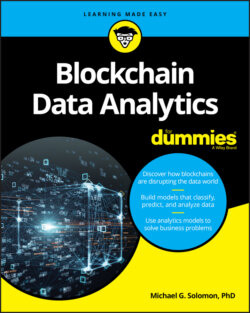Читать книгу Blockchain Data Analytics For Dummies - Michael G. Solomon - Страница 44
Integrating with legacy artifacts
ОглавлениеAfter you determine that blockchain is a good fit for your environment, the next step is to determine where it fits in the workflow. Unless you're building a new app and workflow, you’ll have to integrate with existing software and infrastructure.
If you are creating something new, the only considerations revolve around how your app stores the data it needs. Will you store everything on the blockchain? It may not make sense to do that. For example, blockchain does a great job at handling transactional data and keeping permanent audit trails of changes to data. Do you need that for customer information?
You may find that only part of your app data should be stored on the blockchain. It may make more sense to store supporting data in off-chain data repositories. (Now that we’re in the blockchain era, legacy databases are called off-chain repositories.) If this is the case, your app will have to integrate with the blockchain and the off-chain repository.
In many cases, people are integrating new blockchain functionality with legacy applications and data. This integration effort could include introducing both new blockchain functionality and moving existing functionality to a blockchain environment. Although this task may sound straightforward, integrating with legacy systems involves many subtle implications.
Legacy systems define notions of identity, transaction scoping (defining how much work is accomplished in a single transaction), and performance expectations. How will your new app associate legacy identities with blockchain accounts? How will you adhere to your existing application’s notion of traditional transactions? If your application supports rolling back a transaction, how will your blockchain do this? And lastly, will the integration of blockchain maintain sufficient performance or will it slow down the legacy application? Will the legacy application’s users have to wait for blockchain transactions, or will they be able to carry out work like they did before the blockchain implementation?
